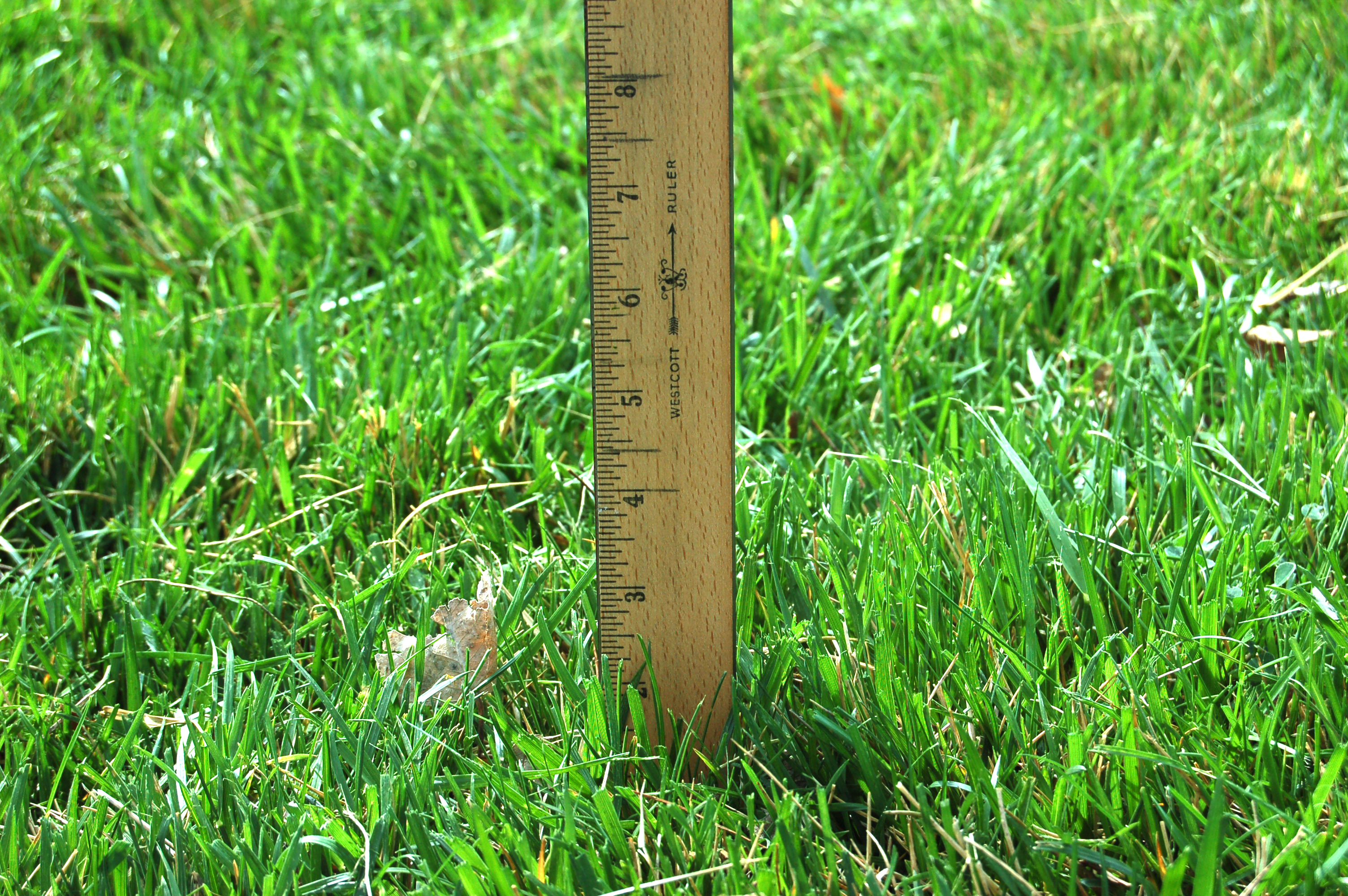|
Turfgrass care booklet available for Texas Panhandle
About 2 million acres in the state of Texas are planted to turfgrass. With the increasing water shortages, it is important that homeowners learn to manage this valuable resource and avoid severe restrictions in the future, according to Texas AgriLife Extension Service specialists.
The key is to mow often enough so that no more than one-third of the leaf blade is removed at any one time. For example, if the lawn is being mowed at a 2‐inch height, then once it reaches a 3‐inch height, it is time to mow, according to Texas AgriLife Extension Service specialists.

Texas AgriLife Extension Service photo by Dr. Brent Bean
A handbook titled “Turfgrass Management for the Texas Panhandle” is now available to help homeowners grow beautiful, but water-smart, landscapes. The publication was put together by the AgriLife Extension specialists in Amarillo.
Homeowners can find information in it covering grass types, establishment, lawn care, weed control, insects and diseases.
“Homeowners need to learn to apply only the necessary water, as well as nutrients and pesticides, to their lawn,” said Dr. Brent Bean, AgriLife Extension agronomist and co-author of the book. “Continued water issues could lead to severe restrictions in available water for lawns in the future.”
Turfgrass should be watered just prior to visible signs of water stress. The information includes the best times to water, how to determine how much water to apply and when to turn the sprinklers off, Bean said.
“Experience and observations have shown that most homeowners over-water their landscapes,” he said. “It is estimated that as much as 20 percent to 25 percent of municipal water in the spring and fall and up to 60 percent in the summer is being used for irrigation of home landscapes.”
Factors to consider when establishing a watering or irrigation plan are: turfgrass species, soil type, management practices and weather conditions, Bean said. The publication outlines the most commonly grown grasses in the Panhandle and the differences in their needs when it comes to water and fertilizer.
Also offered are the following tips on water savings when it comes to lawn care:
- - Run the irrigation system on a set schedule and adjust the run-time incrementally to water just enough to avoid visual signs of stress to the grass.
- - Irrigate for longer but less frequent periods of time. This will promote a deep root system. However, do not apply any more water than the soil will absorb at any one time, or water will run off the lawn and be wasted.
- - Check the irrigation system for problems such as broken heads, leaking valves, heads not popping up properly, etc. All these problems will result in more water being applied than is required.
- - Water during the early morning hours.
- - Use best management practices for fertilization, mowing and aeration to avoid plant stress conditions.
Bean said when possible, homeowners and other turfgrass managers should use rainfall and freeze sensors to override programmed watering during rainfall or freeze events to prevent over-watering.
In case of large rainfall events, manual overrides should also be used to skip the next watering event, he said.
“Rainfall and freeze sensors are required on all new landscape irrigation systems in Amarillo and are a good practice to add to existing systems throughout the Panhandle,” Bean said.
For a version online, homeowners can go to http://amarillo.tamu.edu/agronomy and click on the Turfgrass link. Published copies of the booklet will be available at AgriLife Extension county offices throughout the High Plains beginning in May, Bean said.
More solutions from: Texas A&M AgriLife
Website: http://agrilife.org/ Published: April 18, 2012 |